 If you want to lower Contractors Insurance costs – from Commercial General Liability to Workers’ Comp Insurance – create a safer worksite. Safety should be your number one priority simply because it’s the right thing to do.
If you want to lower Contractors Insurance costs – from Commercial General Liability to Workers’ Comp Insurance – create a safer worksite. Safety should be your number one priority simply because it’s the right thing to do.
But if you need more incentive or ammunition to pitch a safety program to management, know that safety will also improve your bottom line. A safer work environment improves morale, keeps projects on schedule and under budget, and helps lower insurance costs.
Here are three tips for creating a safer worksite.
Assess the Job Site
Before you begin any new job, take time to assess the job site, identify potential hazards, and determine preventative measures to minimize injury. Start with OSHA’s Fatal Four – dangers that are responsible for more than half of the construction worker’s deaths. The fatal four are falls, object strikes, electrocutions, and caught-in/between. Look at a job site and determine how you can minimize those hazards.
Determine areas that should be blocked off while specific tasks are being performed. Install guardrails, catch platforms, nets, and other safety measures to avoid falls. Ensure that scaffolding is constructed correctly, and make sure you have appropriate PPE available for workers, such as safety harnesses, lifelines, and lanyards.
Consider Scheduling
Did you know that a study by the Associated General Contractors of America found that most construction site fatalities occur from 10 am to 3 pm, peaking at noon and that nearly 75% of deaths happened Monday through Thursday? Use that information and schedule safety meetings around noon early in the week. Also, ensure that you have strong safety measures in place for lunch breaks.
Another safety issue common to the construction industry is over-scheduling workers to meet deadlines. If workers are too physically or mentally exhausted, the best safety practices in the world won’t eliminate injuries. According to OSHA, working 12 hours per day is associated with a 37% increased risk of injury.
A 2005 study of medical residents found that every extended shift scheduled in a month increased the risk of a motor vehicle crash on their commute home by 16.2 %. Motor vehicle accidents are the leading cause of work-related deaths in the U.S.
Fatigue was cited as a contributing factor in several major workplace disasters, including the nuclear accidents at Chernobyl and Three Mile Island, the Challenger space shuttle explosion, and BP’s Deepwater Horizon oil refinery explosion.
Don’t risk your workers’ health and safety or the health of your company by over-working your employees. Ensure that all your employees and subcontractors take regular breaks and don’t work too many hours.
Develop a Culture of Safety
If you want your workers to follow your company’s safety procedures, you need to develop a culture of safety from top management on down. Your company should have a safety program that includes regular safety training, meetings, and updates (at least once a week).
Those meetings can include brief onsite recaps to formal OSHA training to fun team-building activities. And your safety program should be practiced and enforced by everyone. Make safety a priority at your company. Don’t just give it lip service or focus on complying with the minimum OSHA standards.
Follow these three tips to let your employees know that their safety is your number one priority, and your business will experience better employee morale, lower employee turnover, lower insurance rates, and so much more.
Want to Save More on Contractor Insurance?
The American Insuring Group has experienced agents who specialize in Contractors Insurance. Plus, as independent agents, we compare the cost of your insurance with several companies to ensure that you get the best rate on the right coverage.
Give us a call today at (800) 947-1270 or (610) 775-3848 or connect with us online.



 Contractor Insurance is required to protect your assets and your business, whether you’re a one-person independent contractor or the owner of a construction company.
Contractor Insurance is required to protect your assets and your business, whether you’re a one-person independent contractor or the owner of a construction company. Want to know how to lower your
Want to know how to lower your 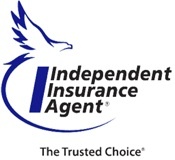 Another way to save on Contractor Insurance is to work with an independent agent – like those at American Insuring Group – who will compare the cost and quality of insurance coverage among several different competing insurance companies.
Another way to save on Contractor Insurance is to work with an independent agent – like those at American Insuring Group – who will compare the cost and quality of insurance coverage among several different competing insurance companies. As a contractor or restaurant owner, you’re probably looking for ways to cut costs and improve your bottom line. A Business Owners Policy – or BOP – is a flexible and affordable way to save on
As a contractor or restaurant owner, you’re probably looking for ways to cut costs and improve your bottom line. A Business Owners Policy – or BOP – is a flexible and affordable way to save on 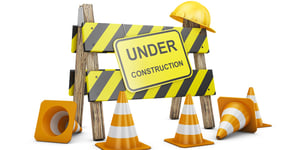 For many contractors, talking about
For many contractors, talking about  Every business comes with its share of risk, and a contracting business is no different. If anything, contractors face more than the average risk. Fortunately, there are things you can do to minimize or even eliminate many of those risks. Plus,
Every business comes with its share of risk, and a contracting business is no different. If anything, contractors face more than the average risk. Fortunately, there are things you can do to minimize or even eliminate many of those risks. Plus,  Understanding these three risks, minimizing them, and having the right insurance is vital for a healthy bottom line and the success of any contracting business.
Understanding these three risks, minimizing them, and having the right insurance is vital for a healthy bottom line and the success of any contracting business. If you get hired as a subcontractor, don’t assume that the general contractor’s Contractors Insurance covers you. As a subcontractor, you are NOT considered an employee of that contractor, and
If you get hired as a subcontractor, don’t assume that the general contractor’s Contractors Insurance covers you. As a subcontractor, you are NOT considered an employee of that contractor, and 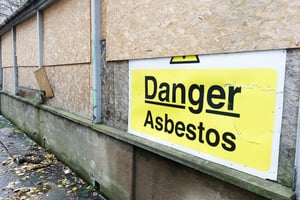 A safe work environment translates to lower Workers Compensation and
A safe work environment translates to lower Workers Compensation and 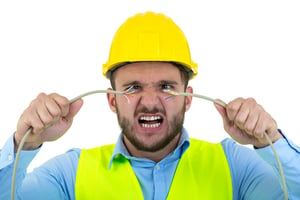 Construction sites are among the most dangerous work sites in the U.S., which is why
Construction sites are among the most dangerous work sites in the U.S., which is why 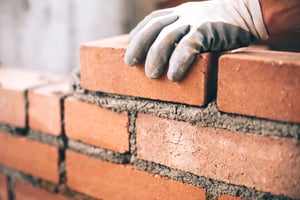 Construction is one of the most hazardous occupations today, and masonry contractors are no exception. According to Masonry Magazine, masonry construction is one of the high-risk specialty trades with a nonfatal injury rate of 191.5 per 10,000 equivalent full-time workers.
Construction is one of the most hazardous occupations today, and masonry contractors are no exception. According to Masonry Magazine, masonry construction is one of the high-risk specialty trades with a nonfatal injury rate of 191.5 per 10,000 equivalent full-time workers.



